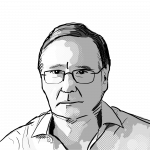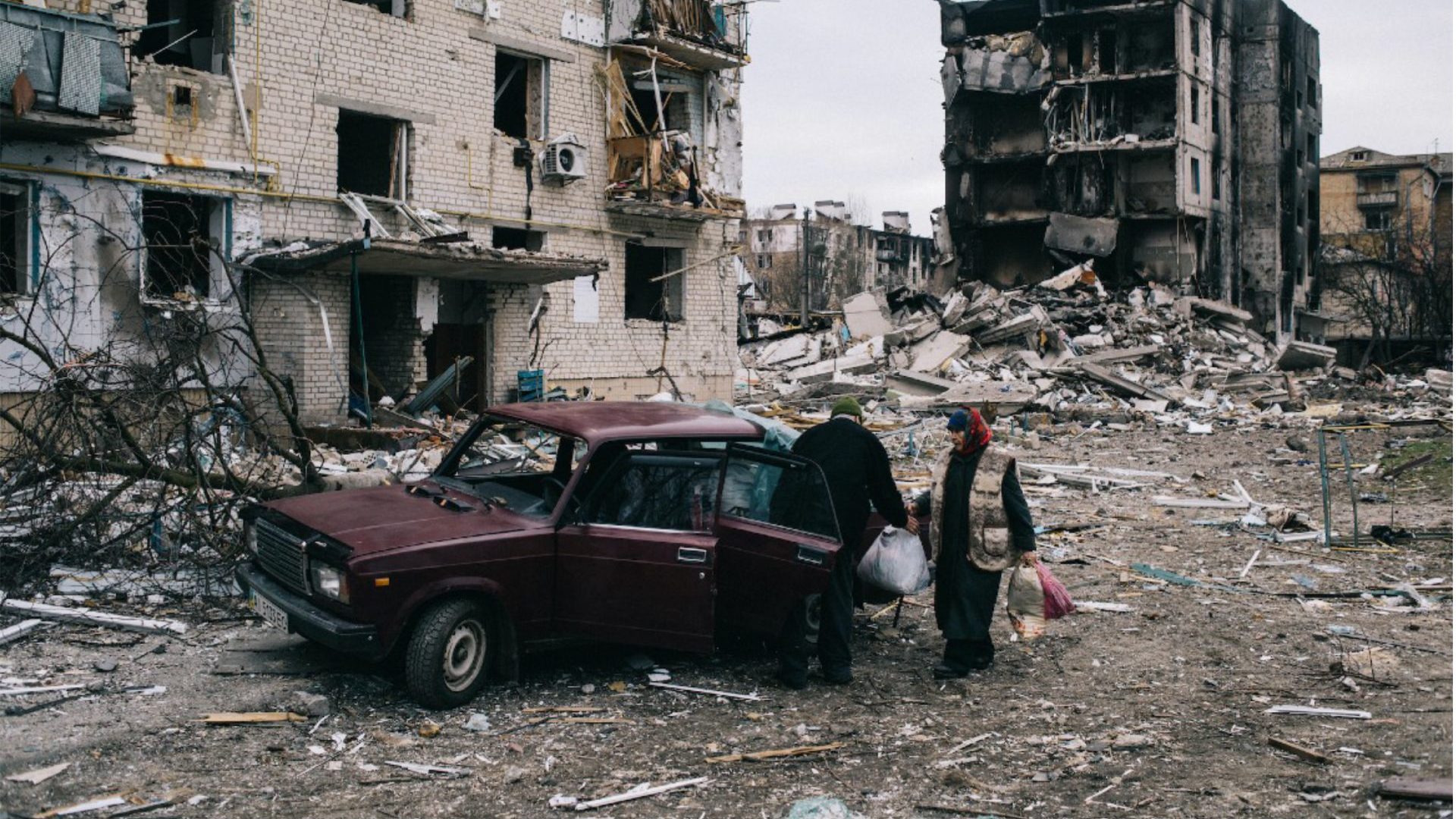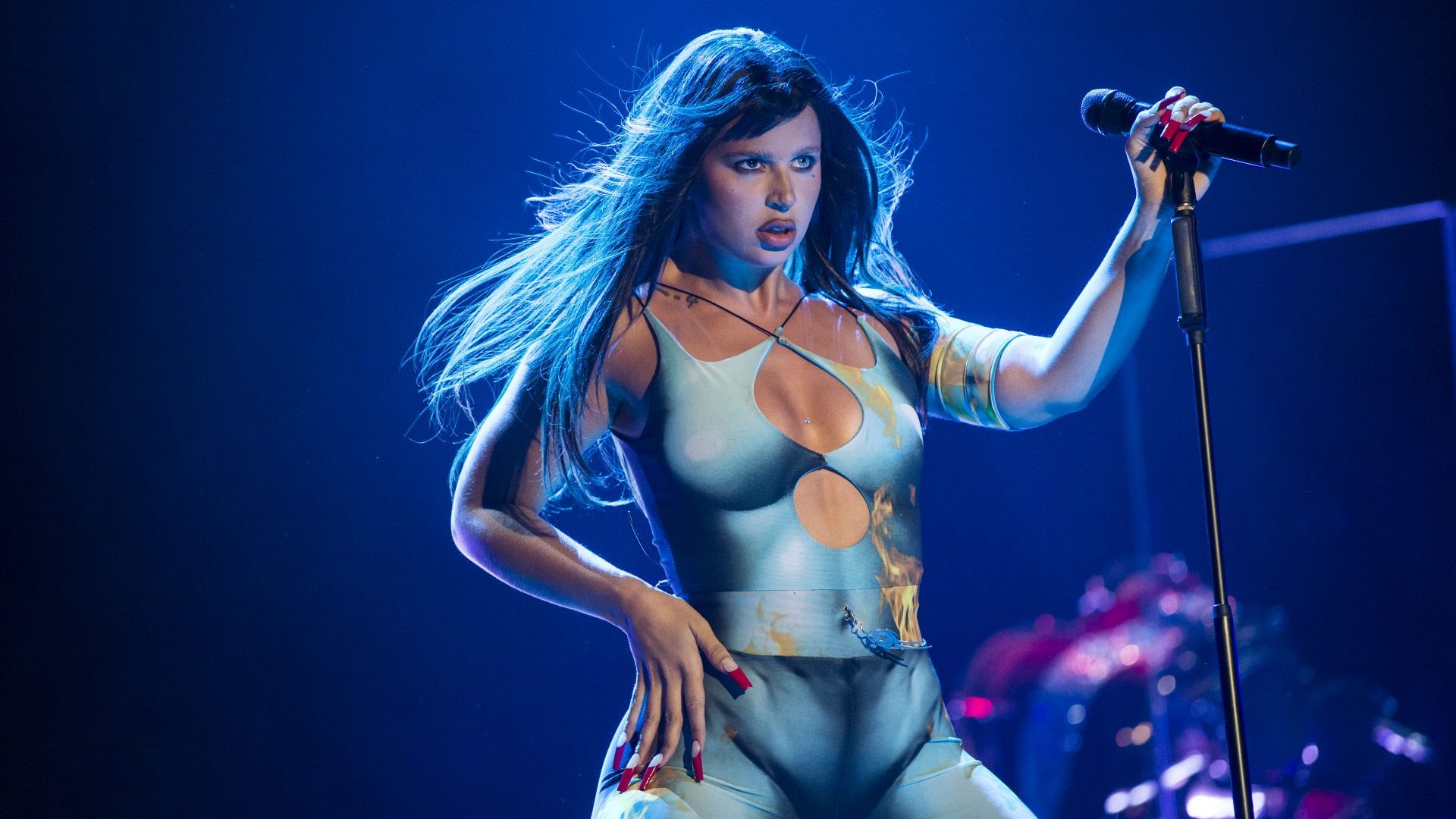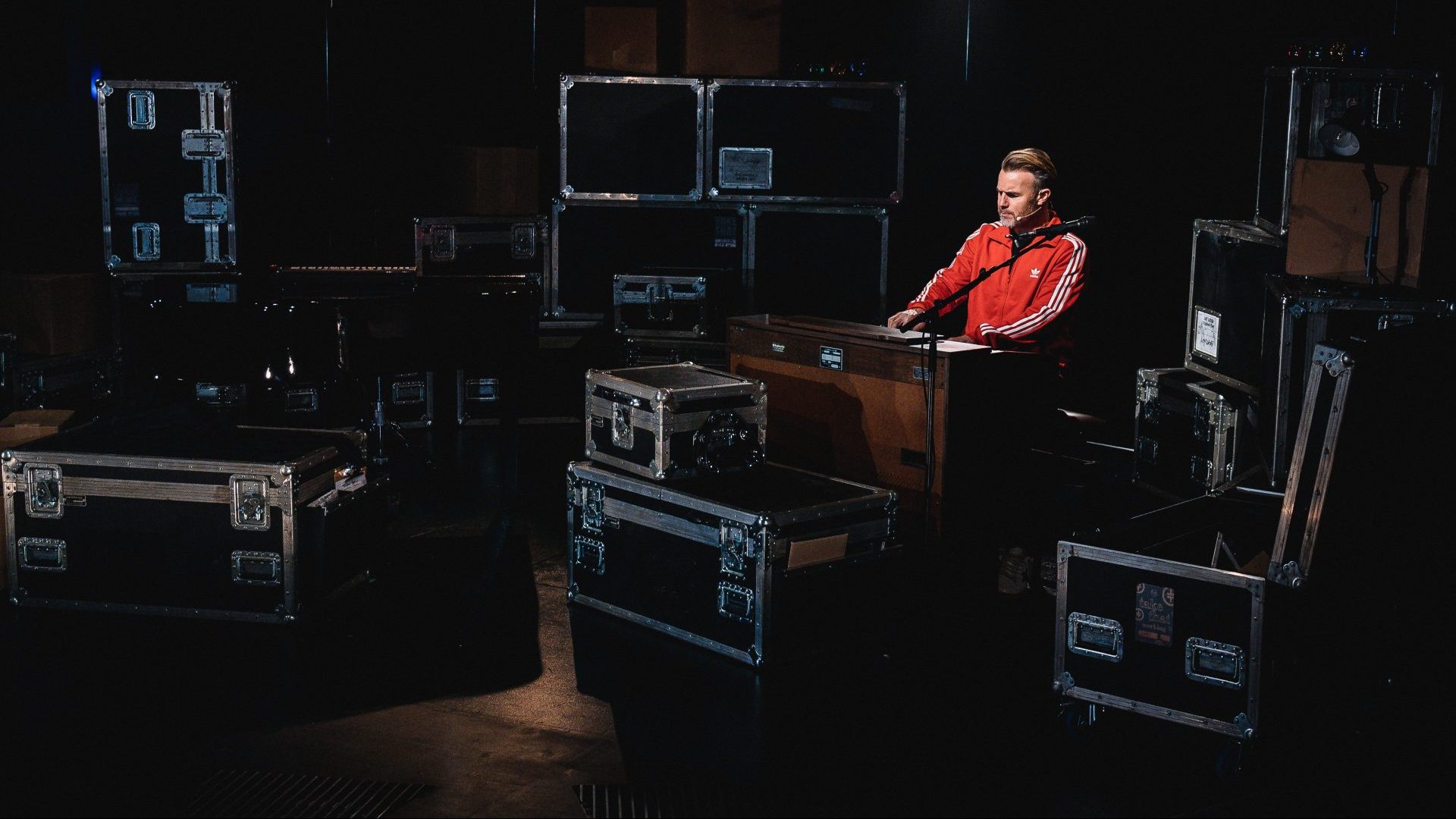It took an artist to record the moral chaos that invariably accompanies war. In his engravings of the Peninsular War unleashed on Spain in 1810 by Napoleon, Francisco Goya created scenes of degradation, torture and rape that make death seem merciful.
To take just one image from the series of 80 drawings, The Disasters of War, a woman lies in a grave, luminous with saintly suffering, while a mob circles around her in a hellish gloom.
Goya’s caption reads: “Truth has died. Will she rise again?”
Art has often been used in wartime as propaganda against the enemy, or as a national cheerleader. But it is also a messenger of truth. The early works of British war artists, particularly in the first world war, were optimistic and jingoistic until the harsh reality dawned. Then they came to share the same angry cynicism of Otto Dix, the German artist, with his grim depiction of the trenches, and Pablo Picasso’s furious denunciation of fascism in Guernica (1937).
The same quest for veracity has inspired the curators of the PinchukArt Centre in Kyiv. Barricaded for 143 days after the Russian invasion, the centre has reopened with an exhibition titled When Faith Moves Mountains. Integrated into this is a second collection, Russian War Crimes, a series of damning images by Ukrainian photographers.
Björn Geldhof, artistic director of the PinchukArtCentre says: “We, like all
other Ukrainians, have an obligation to defend Ukraine in the best way that is available to us. And the best way that my team and I can do this is not with
weapons, but with exhibitions.
“People outside the country do not know much about Ukraine so the story of this exhibition is to show how culture is one of the most effective ways to speak about our country, its values, its history and what it stands for.
“We shouldn’t forget that Putin started his whole campaign by saying that Ukraine does not have its own culture, that Ukraine does not exist.”
The exhibition opens with a video by the Ukrainian artist Oleksii Sai who, 200 years after Goya, brings the same unflinching eye to a terrible truth. More than 4,000 images from the conflict come rushing at the viewer with such speed and intensity that it is hard to take in the utter devastation he
reveals – shattered buildings, shattered lives, gruesome images of the bloodied and the dead. So explicit are the images they would be pornographic had Sai not ensured the scenes flash by without pause, giving
viewers no time to linger on the gruesome sights before them.
Just as chilling as the images is the commentary. Sai has taken words from intercepted calls made by Russian soldiers back to their families. The men glory in killing, beating an old man to death, shooting a girl in the head, and relish tales of torture. They boast of “marauding”, stealing anything from TVs to jewellery to moonshine and perfume – “yummy as fuck”, says one.
In one chilling exchange, a wife or girlfriend of a soldier says: “On you go then, rape Ukrainian chicks… but don’t tell me anything. Got it?” She laughs.
The show was born out of a close relationship between Geldhof and Bart De Baere, the director of the Museum of Contemporary Art (M HKA) in Antwerp, Belgium, which specialises in works from eastern Europe.
“We call ourselves a Eurasian museum but in a completely un-Putinesque way,” says De Baere. “We see it as Europe and Asia united, not European and Asia excluded, as Putin would want it to be.”
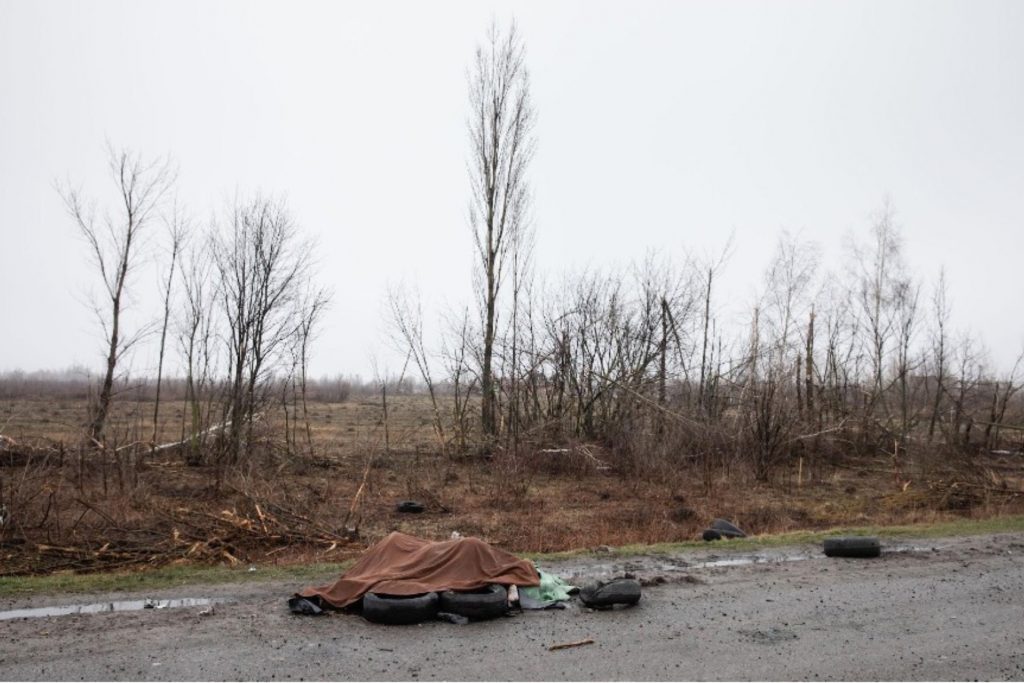
Their first cooperation was a project shown only in Belgium entitled Imagine Ukraine, with works from the M HKA collection, which was so well received they agreed to bring a version of the exhibition to the Pinchuk and include local artists. But first they had to overcome the sense that an art exhibition during a war would be considered frivolous. Why consider investing in culture at such a time? Why does it matter?
“Of course, the war has to be won,” says Geldhof. “Refugees have to be
accommodated, people have to be helped, everyone says that resources
should go to the war, to humanitarian aid and medicare, but also we believe
that the cultural heritage has to be safeguarded because in the longer term it’s about the future, not just about the war.”
Luckily, President Volodymyr Zelensky understood this. He addressed the crowd at this year’s Venice Biennale, to coincide with the opening of a show, This is Ukraine: Defending Freedom, which had been organised by the Pinchuk and the Ministry of Culture. In his remarks, Zelensky said, “There are no tyrannies that would not try to limit art, because they can see the power of art.”
In July the gallery opened its doors in Kyiv and is drawing in crowds of between 500 and 800 a day, which is remarkable given that the city’s population has fallen from five million to two.
“We noticed that people are so emotional they take a longer time in the gallery,” says Geldhof. “You can’t imagine how hard it is to have to arm yourself and bolster yourself against the possibility of immediate death, but
this shows that whatever we have done evokes the possibility that people can feel again.”
Perhaps the crowds are not that surprising. The country’s contemporary art scene gathered momentum after 2013 when protests broke out against closer ties to Russia and artists involved in what became known as the Maidan movement witnessed their colleagues being shot and killed in Kyiv’s Independence Square. As a result the Maidan Museum was created and is open today, as is the Kharkiv Fine Arts Museum, despite suffering substantial damage, while the Odessa Fine Arts Museum is still offering tours of its treasures. Even in Kherson, which is under Russian control, a small group has set up a residency in occupation, producing paintings, videos and diaries.
The re-opening of the Pinchuk is another key chapter in the country’s cultural fight for freedom and truth. It features 45 artists grouped by theme,
reflecting on war and suffering but also hope and a yearning for freedom,
with familiar names from the M HKA collection such as Luc Tuymans, Jan
Fabre and Marlene Dumas and the Belgian Francis Alÿs, whose When Faith Moves Mountains has given the exhibition its name.
It’s a wry commentary given that the video shows 500 volunteers walking up a sand dune, shovelling away but only displacing the dune by a few inches.
“Maximum effort, minimum result” was Alÿs’s motto, a statement of faith in human endeavour but also, maybe, an epitaph for Putin’s failure.
From Ukraine, the emphasis is on contemporary work. What seems to be a poetic ink drawing of clouds by Oleksii Sai turns out to be columns of smoke rising from burning buildings. A painting by Andriy Sagaidakovsky, depicting a Ukrainian landscape in drab grey and black, has the caption “Sometimes man is tired very much and wants to sleep a lot”. It’s a
sentiment that exhausted soldiers would understand all too well.
A charcoal drawing by Nikita Kadan, The Shadow on the Ground, shows the ghost or shadow of a body cast on to the furrows of a ploughed field. It’s a
Russian soldier who came to conquer but is now lost in some foreign field,
thanks to the ruthlessness of his leader.
Given the suffering of children, the naive style of a Lviv-based artist who uses the alias Kinder Album is entirely appropriate. Bomb Shelter portrays
children and a grandmother sheltering in the long all-embracing arms of a
nude – and therefore unprotected – woman in front of smoking ruins.
The exhibition also includes new paintings by Lesia Khomenko, whose gallery in Kyiv is being used as a bomb shelter and who is now working in a
residency for a Ukrainian-owned pop-up gallery in Miami, Florida.
“It is very important to be present on the global stage,” says Khomenko, who is with her 11-year-old daughter while her husband, Max, a new media artist and musician, is serving in the army. “People ask me facts as if I am a witness about the war but I am an international actor and want to investigate what war means and explain it by mixing my own experience with a global language.”
Her work draws on the inspiration of her late grandfather, who was also an artist and who witnessed dead bodies lying in the streets during the Great Famine in 1933, which killed millions. But it was forbidden for him to express what he saw or felt. Instead he had to stick to the narrow, prescriptive rules of Soviet social realism.
“Painting for me was very connected to the visual heritage of eastern Ukraine, which was based on social realistic traditions,” says Khomenko. “I
want to work with that tradition and mix it with internet images, to layer it
together and construct new images.”
In To remove/to add she has taken some of that figurative tradition, but brought the aesthetic of the selfie into her paintings of men at war. The
images are blurred, stretched, both real but subverted, their faces and their weapons obscured.
She has used her husband in a series entitled Max is in the army, for which he sends her footage of himself and his comrades, which she blends with imagery of soldiers she collects from the internet. She has to hide the background and obscure the faces so that they are not recognised and immediately attacked by the enemy.
The original image for the painting is edited and manipulated with blurred strokes. I am not removing the information from the image but editing the transformation – like in computer games where you can vary things on your avatar. I thought the guys I depicted turned into some post-human figures, but I do want my characters to look scary.”
Khomenko has been quoted as saying that she felt “a sense of satisfaction” when she saw photographs of dead Russian soldiers.
“I am thinking strongly about the new normality because our society is in a very strange condition with its approach to death. There are images of dead mutilated bodies on the internet all the time. When you look at them, sometimes with their internal organs visible, you understand that you look at something very intimate, you can see everything, it is like watching war pornography, the erotic of the war.
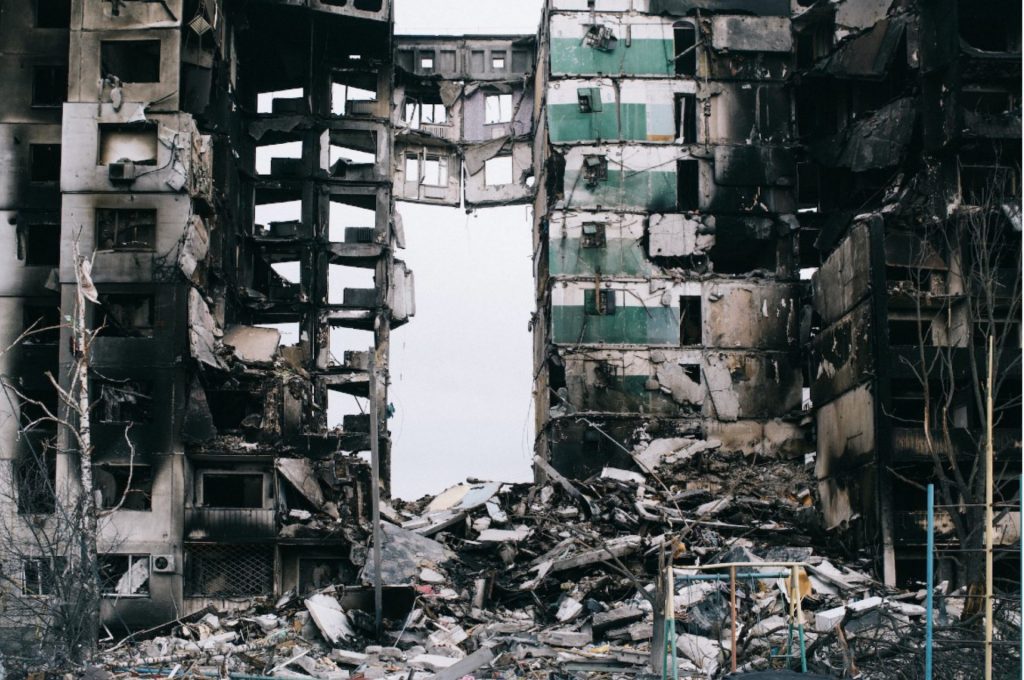
“War dehumanises us. Most people would say we have to hate Russians, but for me it is uncomfortable to hate. I am very angry, but to hate people you do not know is another question.”
If not hate, then anger is the emotion aroused by the photographs in Russian War Crimes. What the curators refer to as the “wailing wall” is a display of images from locations marked on a map that fills most of one wall, showing the location of war crimes. The photographs will be presented as evidence to the international criminal court in The Hague.
Björn says: “Many influential people say that Ukraine should not give up land but it’s not about the land, it is about the people. When that land is taken it becomes about concentration camps, executions, rape. What we are
enduring is genocide according to the five principles laid down by the United Nations. Children are being taken to re-education camps and adopted into Russian families, in an attempt to exterminate what it is to be Ukrainian.”
Among the scenes of the crumpled buildings, debris-strewn streets and rusting heaps of cars, the images that stand out are those of the people. One photograph shows an elderly couple packing their few belongings in a car ready to drive away from the wreckage of their home. In another, a tearful woman walks along rows of the buried, their remains signalled by small hand-drawn posters. Both were taken by Maxim Dondyuk.
Among contributions by Mikhail Palinchak, a defiant girl stands, half sulky, half tearful, on a destroyed Russian tank, while a crucified Christ hangs by an empty roadside, a reminder of the essential part that church and religion play in Ukrainian culture.
The country is home to more than 2,500 wooden churches, gothic masterpieces with spires and deep, shingled eaves. These were built between the 16th and 19th centuries by communities of Orthodox Christians and Greek Catholics and filled with monumental art, paintings and icons. Many are located in remote rural communities and are close to the battle lines in the east. Many are threatened by shelling and gunfire.
Kateryna Goncharova, heritage crisis specialist for the World Monuments Fund who lives in a “relatively safe” town in central Ukraine, admits: “We can’t do much. We cannot do a wholescale preservation project because we
cannot protect our work.
“We are trying to operate in the really high-risk areas where there is a danger of missile attacks. We can help NGOs to evacuate museum collections and we have arranged for 445 fire extinguishers to be put in the hands of volunteers and placed on standby to stabilise any damage to the buildings.”
Goncharova and her team cannot guarantee that a church saved today will not be overrun tomorrow. However, she insists: “Waiting for the war to be over is more risky in terms of losing what we have right now.”
Goncharova’s organisation is trying to save Trinity Church in Zhovkva, which dates back to 1720, by covering it with plastic sheeting to protect it from the elements. But the monastery of Sviatohirsk, one of the most powerful symbols of Ukrainian faith, set high on a white chalk cliff above the Seversky Donets River, has been hit by at least five missile attacks. The painful irony is that the monastery comes under the control of the Moscow Patriarchy, which means in effect that the Russians have set fire to one of their own churches.
“We recently had reports about Russian professionals being sent to the south where there are many archaeological sites to confiscate or loot museums such as the one in Mariupol,” says Goncharova. “The director of Kherson Museum reported that Russians had tried to break in and we have had quite frequent reports of curators being tortured if they do not hand over their treasures.”
The World Monuments Fund is organising seminars for people on how to behave when they are seized or their towns occupied and when soldiers come knocking on the museum door.
“They are learning how to take care of people and smuggle them out to safe havens,” she says. “I can’t tell you much because that would easily be found out by the Russians, but we have a number of hints and patterns of behaviour to help people trick the occupier when they come looting – how to hide themselves and how to conceal the collection and substitute really valuable items with frauds.”
In short, anything to fool the enemy. Anything to win the battle between those who create culture and those who want to destroy it. For those who believe, the truth will rise again.
PinchukArtCentre, Kyiv, Ukraine, until October 9; open Wednesday to Sunday from 12 noon until 8pm. Free admission
Richard Holledge writes about the visual arts for the Wall Street Journal, Gulf News, FT and New European

